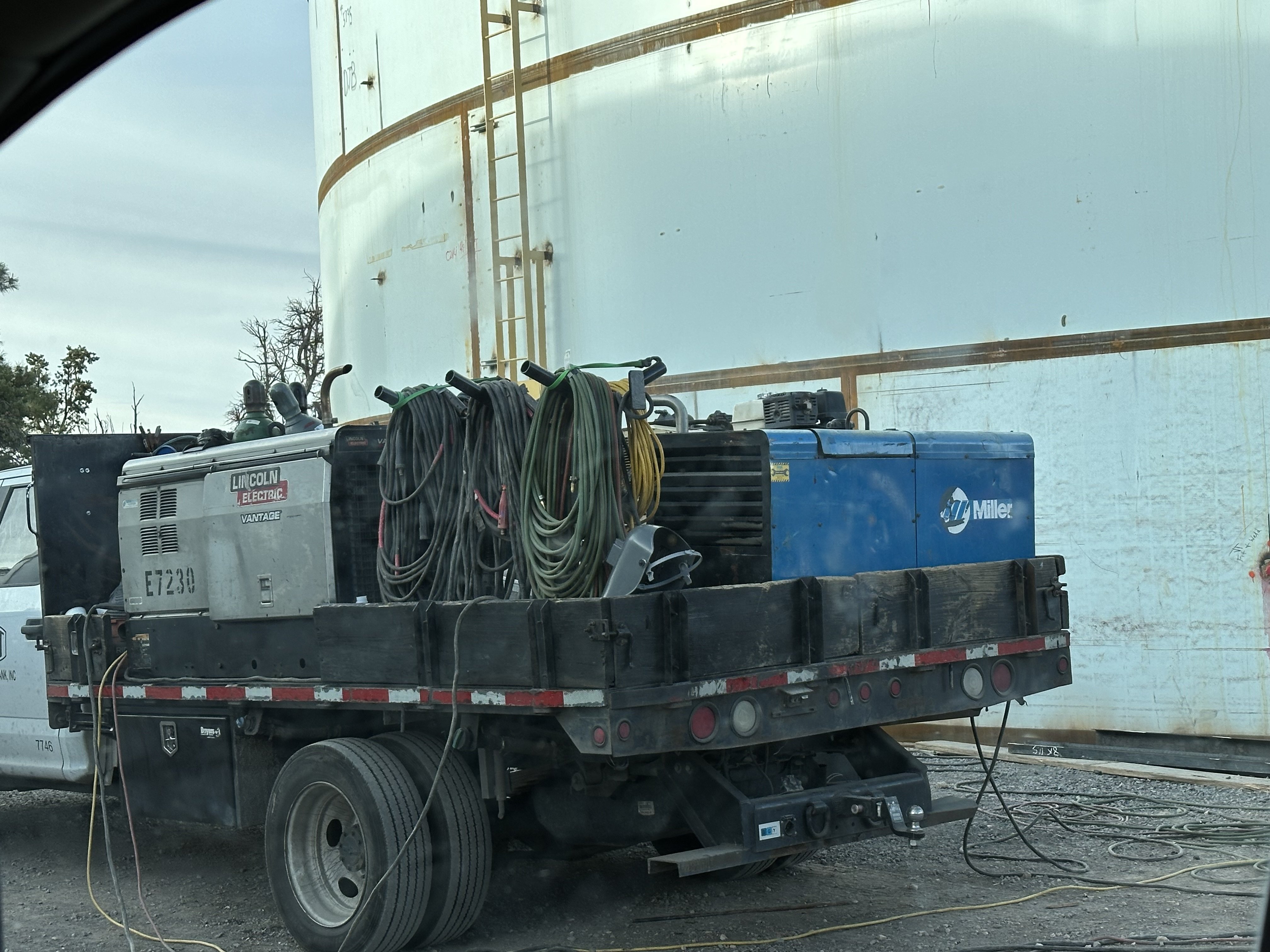An In-depth Review of Storage Tank Welding Inspection Standards and Methodologies for Improved Weld Top Quality and Efficiency
The significance of welding inspection standards in the manufacturing of storage tanks can not be overemphasized, as they serve as the foundation for guaranteeing weld honesty and functional reliability. Different inspection strategies, consisting of visual evaluations and progressed non-destructive screening methods, are vital in recognizing possible defects that can compromise performance. Adhering to governing requirements not just enhances weld high quality but likewise mitigates the danger of expensive failures. As we check out the subtleties of these methods, it comes to be vital to think about just how a systematic approach can revolutionize existing methods and result in considerable renovations in results.
Importance of Welding Evaluation Requirements

Welding inspection requirements encompass a series of criteria, including material specs, welding treatments, and qualifications of personnel associated with the welding procedure. By enforcing these criteria, companies can methodically identify and remedy potential issues, thereby decreasing the chance of costly repair services or devastating failures. Additionally, extensive examination techniques foster a society of accountability and accuracy, urging welders to preserve high levels of workmanship.

Common Welding Examination Methods


Ultrasonic Checking (UT) is one more prevalent strategy, utilizing high-frequency acoustic waves to spot interior imperfections that might not be visible on the surface. This approach is particularly efficient for determining voids or incorporations within the weld steel. Magnetic Bit Checking (MT) is additionally extensively used, especially for ferromagnetic materials, as it reveals surface and near-surface defects with the application of magnetic fields and ferrous bits.
Furthermore, Fluid Penetrant Testing (PT) discovers surface-breaking flaws by using a penetrant to the weld and after that making use of a designer to extract the penetrant. Each of these techniques contributes to a detailed evaluation strategy, making sure that welds fulfill the stringent quality criteria needed in container building.
Regulatory Standards and Compliance
Regulatory criteria and conformity are important components in guaranteeing the safety and reliability of bonded structures in container building - Tank Welding Inspection. These requirements offer to establish minimum requirements for material residential or commercial properties, welding treatments, and examination practices, therefore minimizing the danger of architectural failings and improving general performance
Trick companies, such as the American Society of Mechanical Designers (ASME) and the American Welding Culture (AWS), provide standards that are extensively adopted in the market. Compliance with these requirements not only makes sure adherence to finest techniques yet also fulfills lawful and contractual responsibilities, safeguarding the interests of stakeholders.
Regulative bodies usually mandate adherence to details codes, such as ASME Code Section IX for welding certifications and API 650 for welded storage tanks. These codes lay out demands for welding check here strategies, certifications of workers, and screening methods to confirm weld integrity.
Regular audits and examinations are important to keeping compliance, as they help recognize inconsistencies from established standards. Non-compliance can cause significant penalties, job delays, and safety hazards. Thus, a go robust understanding of regulative requirements and a dedication to conformity are critical in achieving premium and durable bonded tank structures.
Non-Destructive Evaluating Approaches
Exactly how can the integrity of welded frameworks be assured without triggering damages? Non-destructive screening (NDT) techniques provide a robust service, making it possible for assessors to review weld quality without jeopardizing the product - Tank Welding Inspection. Amongst the most usual NDT methods are ultrasonic testing (UT), radiographic testing (RT), magnetic fragment testing (MT), and dye penetrant screening (PT)
Ultrasonic testing utilizes high-frequency acoustic waves to identify interior problems and characterize material residential properties. It offers exact dimensions and is especially efficient for thick products. Radiographic testing includes passing X-rays or gamma rays via the weld, developing pictures that disclose architectural issues such as splits or voids. This approach is indispensable for examining the honesty of complex welds.
Magnetic bit screening is suited for ferromagnetic products, where magnetic areas reveal surface area and near-surface discontinuities. Color penetrant screening utilizes a liquid color to highlight surface-breaking defects, making it an efficient website here method for non-porous products.
Each of these NDT methods has unique advantages, permitting detailed evaluations tailored to details products and welding procedures. By implementing these techniques, industries can make certain the integrity and safety of welded frameworks, ultimately enhancing overall efficiency.
Enhancing Weld Top Quality Via Examination
Efficient evaluation plays an important function in improving weld high quality, acting as a crucial checkpoint in the fabrication procedure. By recognizing possible flaws early, inspections minimize the risk of jeopardized structural integrity and make certain compliance with market requirements. Using a combination of visual examinations, non-destructive testing (NDT) techniques, and mechanical analyses, assessors can spot concerns such as porosity, fractures, and incomplete fusion.
Applying a robust examination procedure not only improves the total top quality of welds yet likewise promotes a culture of accountability among welders and fabricators. Routine training and qualification of examination employees make certain that they are equipped with the necessary abilities to acknowledge and resolve potential troubles successfully. This proactive method minimizes rework and connected expenses, ultimately adding to project effectiveness.
In addition, thorough documents of examination findings provides beneficial understandings into reoccuring problems, helping with constant improvement in welding techniques. By leveraging sophisticated technologies, such as automated ultrasonic testing or electronic radiography, weld quality can be enhanced via extra specific examinations. Finally, a strenuous examination process is crucial in attaining premium welds, making sure safety, dependability, and durability in container construction.
Final Thought
To conclude, the application of rigorous storage tank welding evaluation standards and methodologies is important for ensuring weld integrity and efficiency. By utilizing a combination of visual inspections, non-destructive testing techniques, and adherence to governing criteria, organizations can effectively recognize and reduce possible defects. Cultivating a culture of responsibility among welders better enhances the quality of welding processes. Inevitably, these practices add to minimized structural failings, lower repair service expenses, and boosted functional performance within the market.